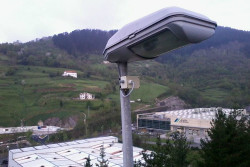Building sustainable and liveable cities
Specifically, the URB-GRADE (URB-Grade: Decision Support Tool for Retrofitting a District, Towards the District as a Service) project supports upgrading a district to become more energy efficient, cost effective and to increase comfort for its citizens in what is known as a ‘District as a Service Platform’ (DaaS Platform) approach. The URB-GRADE platform will become a major tool for city planning and decision-making by collecting information from a variety of sensors, other open data sources and survey-based resources. The data is then handled using complex event processing (CEP) techniques to generate relevant information, which will be available over a common cloud-based service platform. During the project lifetime, three different pilots were set up in order to cover all the aspects of a district. Unlikely geographical locations were chosen for the tests, along with a variety of consumption targets. Data collection took more than a year and a half to complete (though some work remains on-going). The city of Eibar in Spain is aiming to improve the energy efficiency of its streetlight network in different urban areas – commercial, residential and industrial – without compromising the comfort level of those who benefit from the service. Each test scenario had different characteristics such as size, type of area, etc. The aim of the pilot was to understand all the variables that could affect the consumption. A representative sample of 12 streets was taken to collect all the necessary characteristics. Information from sensors, surveys and historical static data was gathered for analysis. In the city of Kalundborg in Denmark, the goal was to reduce the energy consumption in residential homes by increasing awareness about using renewable energies through green campaigns. The idea was to estimate the expected energy savings based the campaigns and to assess the current savings based on real data and survey data. This pilot has revealed the value of analysing a variety of data and the use of multiple data sources. For the third pilot – in Barcelona, Spain – the objective was to improve the energy consumption profile of streets shops without reducing the comfort levels of users. Different consumption profiles were considered, such as air conditioning, lighting, electrical appliances, and so on. The potential saving of each profile will be assessed to identify the most efficient shops where different actions will be executed – for example, changing lamps to led or upgrading appliances to Class A energy efficiency ratings. 95 facilities were studied for this exercise – the aim was to collect all the characteristics which affect the consumption. ‘All the information collected is now being processed to obtain the different Key Performance Indicators (KPIs), which have been defined for each of the pilots and that will be used for final analysis,’ explained URB-GRADE project dissemination manager, Mikel Larrañaga. ‘Finally, one of the main novelties of the platform is its multi-tenancy nature. Although multi-tenancy seems promising, it is uncovering many issues on the district scale and working with only a limited but diverse set of stakeholders in real pilots. These issues include language support, domain modelling and security.’
Countries
Denmark



